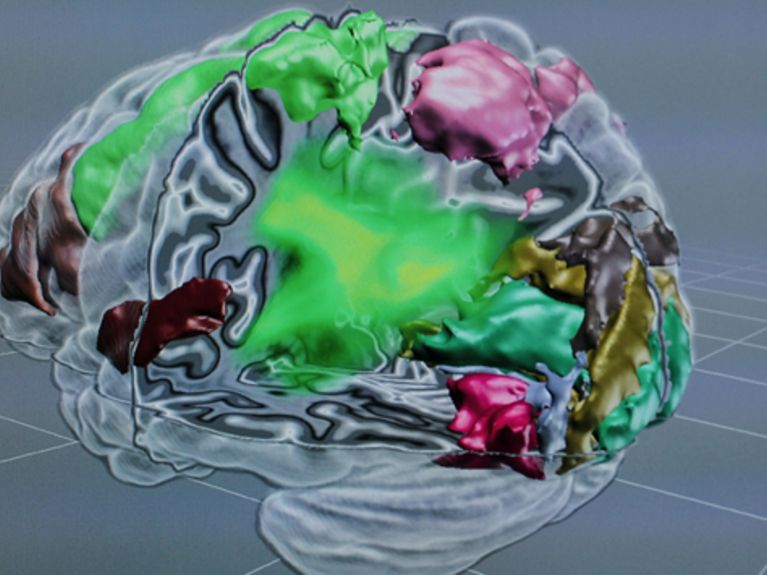Sensory Perception
Two become one

The "Virtual Brain" was created by neuroscientist at Forschungszentrum Jülich in cooperation with the Virtual Reality Group of the RWTH Aachen. Copyright: Forschungszentrum Jülich
Our sense of touch tells us whether an object is wet or dry, rough or smooth, hard or soft. At the same time, the brain is able to recognize that a freshly filled coffee cup feels both smooth and warm. Yet how does the brain process temperature and touch simultaneously?
British neurobiologist James Poulet has already received two awards from the ERC for his fundamental research. Copyright: David Ausserhofer/MDC
For his work, the British neurobiologist chose to focus on “temperature” and “touch”. “We take our ability to perceive these sensory impressions simultaneously completely for granted, but we don’t know much about how they are processed and combined,” says Poulet. Just recently, he received a “Consolidator Grant” from the European Research Council (ERC) for this research project. The 41-year-old MDC scientist is now using mice as a model to track the various sequences that occur from the skin’s reception of the stimulus to the processing of the stimulus in the brain.
Poulet aims to solve the mystery of combined perception in a project comprising three phases. The first phase involves find out which neural circuits process thermal and tactile stimuli. For this, he is locating the responsible “nerve cell networks” and depicting them in a kind of map with the intention of finding out which regions of the brain respond to each sensation and which neurons are involved.
Readers comments